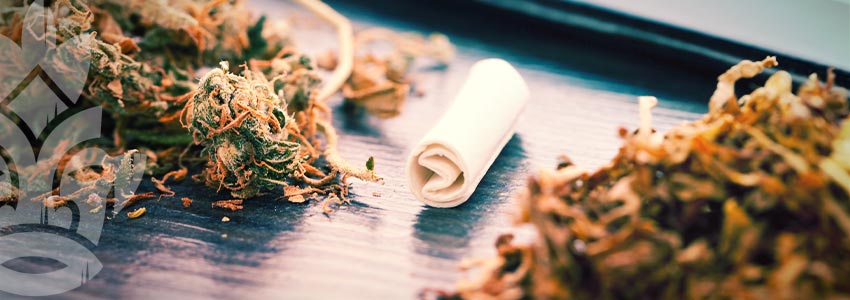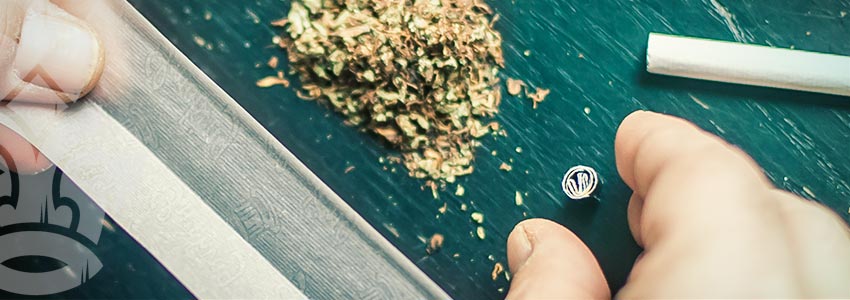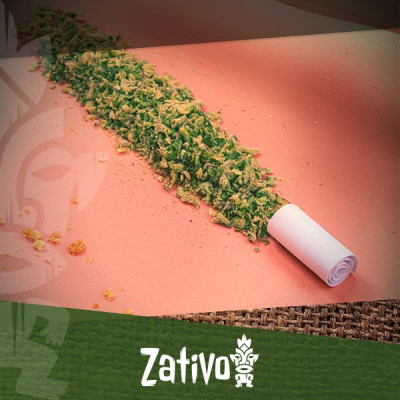Don't have an account?
Register NowYou have to add to cart at least 5 bottles or any program to make checkout.
- BlogHow To Make A Joint Filter
How To Make A Joint Filter
Published: March 15th, 2021
Categories:
Cannabis Info
The practice of smoking cannabis joints has been around for a while now. Here’s a fun fact: cannabis joints came into existence in the 1900s, around the time when Mexican immigrants introduced recreational marijuana use to America. Eventually, the rest of the world followed suit, and you can now see joints between the fingers of stoners in any country where weed is found.
You might have expected the joint to evolve within those 120 years. Interestingly enough, though, the only significant change that’s occurred is the addition of the joint filter. That, as it turns out, was a major single change, as it made joints more enjoyable and easier to handle than they ever were before. That being said, it won’t be surprising if many of you herb lovers out there haven’t used a joint filter before. Some of you might not have known they even existed! If you fall under either category, this article might help you elevate your smoking experience a few notches higher.
What Is a Joint Filter?
The name itself is self-explanatory, but here’s a brief overview. A joint filter is either a specifically folded piece of paper or an otherwise small object placed at the corner of your joint. Just like cigarette filters, they serve two purposes: a mouthpiece for your lips, and a buffer between the weed and the smokable end of the joint.
Filter tips come in various forms, shapes, and sizes. There are the classic paper tips that you’d find in your neighborhood stores, but you also have your filter tips made from hemp, cotton, wood, glass, cellulose, even activated charcoal.
What Are The Benefits Of Using A Joint Filter?

We did mention how joint filters enhance the overall smoking experience, but let’s delve into the specifics:
No More “Scooby Snacks”
Every smoker knows the feeling of having weed scraps stuck on your lips and tongue after taking a drag off a joint. Those scraps, dear reader, are called Scooby Snacks (no offense to Scooby, of course). But as we previously mentioned, one of the main uses of a filter is to create that barrier between the weed and your mouth. If you have one in place, you can say goodbye to the irritation brought on by stray weed bits in your mouth.
Reduce Tar Levels
Smoked cannabis may not be as ravaging to your lungs as nicotine is, but there remains the presence of tar. Anything you combust and inhale will lead to carcinogenic build-up in your lungs. A joint filter won’t eradicate the tar, but it can help catch some of it. In turn, your lungs won’t take too much of a beating.
Burn Prevention

Just like with Scooby Snacks, burning your lips and fingers is another annoying part of smoking cannabis. This usually happens when the joint is down to the last fourth and you choose to continue to take puffs from it. This will no longer be a problem if you have a joint filter in place. That little piece can act as a stopper for when the joint is about to reach its end.
Better-Shaped Joints
Ever tried to pass around a badly rolled joint? It’s difficult to hold, the weed tends to fall out, and the joint itself loses fire in between puffs. Overall, it’s not a very pleasant experience. But adding that little filter in can significantly improve the structure of your joint. For one, it acts as the anchor to help position the ground-up buds while rolling. It also helps keep your joint structurally sound when being passed around by multiple people.
Goodbye Roaches
Don’t you just hate it when you leave roaches around? Not the creepy crawlies, but the non-consumable weed remnants at the tip of a used-up joint. Those are usually good for a couple more hits, but not without torching a part of your lips. Well, if you add in a joint filter, you can bid these roaches goodbye! That little filter tip allows you to smoke your joint all the way through, leaving no wasted herbs behind.
3 Popular Types of Joint Filters and How to Make Them

You can make yourself some easy joint filters using paper, and these tend to be the most popular despite nice non-disposable options. Here are the three popular types of paper filter designs you can experiment with.
Simple Spiral or Cylinder Filter Tip
This is by far the simplest type of filter tip you can make. When it comes to the spiral tip, a.k.a the cylinder tip, all you’ll need is the ability to roll a piece of paper as tight as possible.
What You’ll Do:
-
Get a piece of paper filter, take a small section of one of its ends, and fold it down tight.
-
Roll it forward towards the other end, but be sure to leave no unnecessary space.
-
Do the same thing to the other end to ensure its stability. It’s akin to rolling up a yoga mat tightly for easier storage. Nice and easy.
W or M Accordion Filter Tip
If you want to add a touch of style into your filters without too much effort, the accordion tip is the way to go.
What You’ll Do:
-
Start with the same process as the spiral tip, but instead of immediately rolling, you’ll fold about 2mm over, creating a small rectangle at the end of the paper.
-
Keeping this initial fold, you will fold the end over again, but then in the opposite direction.
-
Repeat this process about three more times until you get a mini accordion on one end of your filter paper.
-
From there, finish it off by rolling it onto the unfolded section.
Canna-Leaf Filter Tip
If you thought the accordion tip was already stylish enough, you likely haven’t seen the canna-leaf filter tip. Yes, it is possible to make, although it’s a bit more tedious. Here's a tip in advance: the longer your filter tip, the easier this one is to create!
What You’ll Do:
-
Begin with the folding process you previously did with the accordion tip. Create five flips, gradually increasing the size of each fold. You know you’re on the right track if you see three triangular shapes when you look at it from a side angle.
-
Proceed to make five increasingly smaller folds to complete your canna-leaf shape. Look at it again from a side angle and you should see five triangular folds. The biggest one should be in the middle.
-
Bring the outsides of the smallest folds together, under the tall, center fold. This little leaf you’ve formed will serve as the inside of your filter.
-
To finish it off, roll the excess filter paper around your mini-leaf.
Should You Use Pre-Creased Or Regular Paper For Your Filters?

So you’ve decided to drop by your smoke shop and get yourself some filter papers. The attendant then might ask you if you want the regular or pre-creased. Which one do you go for?
Here’s a simple answer: if you’re new to the joint filter game, you’d want your papers pre-creased. They’re much easier to roll into the spiral/cylindrical tip we discussed earlier. But if you want to have your filters look a little fancier, un-creased is the way to go. It allows for easier folding and shaping into the accordion or canna-leaf tips you can impress people with.
How To Roll A Joint With A Filter Tip

With your filter papers picked and rolled up, the next step is rolling your joint. Here’s how you can get it ready to go:
-
Once you’ve picked out your preferred strain, pick up about a gram and grind it evenly. Be sure it’s well broken down, but not so finely that it would prevent the air from flowing through.
-
Once you’ve ground up your herb mixture, sprinkle them onto your paper. Leave some space at the smokable end for the filter to sit.
-
Now for the rolling process. The filter should act as a guide to keep the buds in place as you slowly roll the paper using your thumbs and forefingers. Having that filter in place will also help maintain the joint shape.
-
After successfully tucking in the unglued edge, continue rolling the joint onto the glued edge. Again, do this process carefully, as to not damage the structure or cause the weed to fall out.
-
Moisten the glued edge either by licking it or with a little water. Keep it lightly moistened and avoid soaking it all the way through. A wet gum on the paper may cause it to lose its stickiness and open up the joint once it’s lit.
-
Pack in your joint a little further by pushing the weed in from the opened end. The filter on the smokable end should be the stopper that prevents all the weed from falling off.
-
Once you’re satisfied with how it’s packed, fold in the opened end for even lighting. That leaves no other next step but sparking your joint up and enjoying your handiwork!





